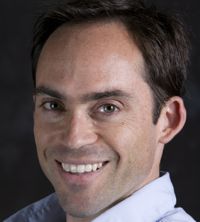Severo Ochoa Seminar by Prof. Adam Burgasser

On Thursday October 2nd, the Severo Ochoa visitor Prof. Adam Burgasser, from the University of California San Diego, will give a Severo Ochoa Seminar, entitled A Spectral Library for Characterizing the Coldest Stars, Brown Dwarfs and Extrasolar Planets
Start date: 2 Oct, 2014 - 10:30
End date: 2 Oct, 2014 - 12:00
Location: Aula, IAC Headquarters, Tenerife.
Organizer: IAC
Abstract:
Over the past two decades, advances in infrared instrumentation have allowed us to identify a vast and previously unseen population of low-temperature stars, brown dwarfs and free-floating extrasolar planets, collectively called ultracool dwarfs. These sources, with surface temperatures reaching below 0ºC, encompass three new spectral classes and include some of the nearest systems to the Sun. Research in this field is now concentrating on the physical characterization of the ultracool dwarf population and application to Galactic studies. In this talk, I will summarize the recent observational advances in ultracool dwarf research, including the recent discovery of the Y dwarf spectral class. I will then describe our ongoing IRTF/SpeX survey, which has measured the low-resolution, near-infrared spectra of over 1500 late M, L and T dwarfs and uncovered new subpopulations of young (5-30 Myr) brown dwarf, metal-poor halo brown dwarfs and short-period spectral binaries.
Adam Burgasser is one of the world experts in the field of substellar observational astrophysics. His research focuses on the properties of the lowest mass stars, coldest brown dwarfs and exoplanets. He is particularly interested in characterizing and understanding the atmospheres of L, T, and Y dwarfs, as well as searching for multiple systems, studying magnetic activity, and measuring population statistics. He employs a variety of observational techniques in his work: optical and infrared spectroscopy, high resolution imaging, radio astronomy, space-based observations, and photometric and spectroscopic monitoring. His key results over the past 15 years include the discovery of very low temperature brown dwarfs in the Two Micron All Sky Survey (2MASS) and other surveys; the definition of the T spectral class; the discovery of the first L-type subdwarfs and halo brown dwarfs; the use of low resolution spectroscopy to characterize the physical properties of L and T dwarfs; identification of the “J-band bump” and flux reversal binaries at the L/T transition, and development of the “cloud break-up” model to explain these features; and creation of the spectral binary method to identify L dwarf/T dwarf binaries.



